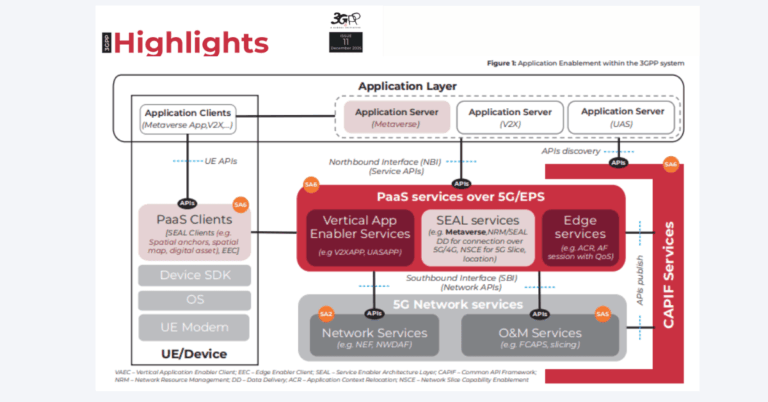Introduction: Evolution of NTNs and 5G Standards
In my previous blog, I explored the evolution of non-terrestrial networks (NTNs) and how 3GPP standards are transforming satellite communications. Traditional proprietary satellite networks are being replaced by flexible NTNs, seamlessly integrating with terrestrial systems, and offering telecom operators the ability to extend their reach and deliver new services, particularly in underserved areas. This shift opens opportunities for enhanced mobile broadband, IoT services, and global connectivity, signaling a new era in satellite-based telecom.
Understanding 5G NR Transparent NTN: An Overview
Building on this foundation, in this blog, we turn our focus to a specific type of NTN architecture—5G NR Transparent NTN. This deployment, often referred to as “bent-pipe” architecture, presents both opportunities and challenges in leveraging ground-based gNodeB infrastructure while utilizing satellite connectivity for global reach.
Transparent payload deployment has gNodeB RU, DU and CU on the ground, often disaggregated and containerized. Typical deployments include the split 6 or ORAN 7.2x split with the RU collocated with the Satellite Gateway. Existing SATCOM operators may prefer to leverage their existing infrastructure for flexibly deploying disaggregated gNodeB. 5G Core Network, deployed on a Central Cloud and covering multiple Regulatory Regions or group of countries, with User Plane (UPF) being distributed for local internet breakout. DU/RU maybe collocated with the Gateways or if hosted in a regional cloud, or located hundreds of kilometers away, thereby requiring synchronized communication over SCF nFAPI. Every Gateway supports multiple feeder links, each to a separate satellite.

Satellite Constellations in Transparent NTN: LEO and MEO
The number of satellites in a LEO/MEO (or Non-GEO / NGSO) constellation depends on altitude and the satellite power capacity. For example, a LEO constellation at an altitude of 1200 Km would typically consist of 300-500 satellites across multiple orbits for global coverage. The geographical coverage span of an NGSO satellite varies with time such that a satellite span may be serving multiple countries simultaneously. A satellite would typically be connected to the ground via a single feeder link for most duration and use a secondary feeder link when switching the feeder link seamlessly.
Satellites supporting transparent NTN technology support a beam control function on the payload. Depending on the steering capabilities, the satellites may support Fixed-Earth beams (GEO), Quasi -Earth Fixed or Moving beams (LEO/MEO). Quasi-Earth fixed beam satellites using their beam steering capability ensure that the coverage span of a geographical region by one of its constituent satellite beams remains the same for the duration the satellite is visible at geo-region. Moving earth beams on the other hand have a time-varying geographical coverage and sweep across the ground as the satellite moves.
NTN Control Function (NCF) and Dynamic Satellite Coverage
The NTN Control Function (NCF), a logical entity identified by 3GPP and realized by entities such as Satellite fleet management & operations, in coordination with onboard payload control systems maintains a mapping of dynamically changing satellite coverage footprint and connectivity with satellite gateways. It not only provides the geospatial satellite parameters carried in SIB-19 broadcast message and its dynamic updates but also provides triggers to gNodeB for service and feeder link switchovers.
Key Challenges in 5G NR Transparent NTN Deployment
Deploying Transparent NTN architecture is not without its obstacles. While the architecture offers flexibility and global coverage, it also introduces several technical complexities that must be addressed to ensure reliable and efficient operation. These challenges arise primarily from the dynamic nature of satellite movement, the variability in geographical coverage, and the coordination required for maintaining seamless connectivity. Below are the key challenges that must be carefully considered:
Associativity of a Geographical cell to a DU Cell instance
Fixed/Quasi earth fixed beams allow a static association of a geographical region (cell) to a respective DU instance. The nature of moving earth beams leads to a fluid definition of a cell in terms of constituent TACs as well as the need for stationary UEs to be in a continued state of implied mobility.
Mobility Procedures and Link Switchovers in NGSO Constellations
Service/Feeder Link switchovers in NGSO constellations generate significant mobility signaling load every few minutes. In addition, these procedures require a well-timed coordination to ensure successful operation.
Interference Mitigation in Overlapping Satellite Beams
Interference from overlapping beams from the same or different satellites simultaneously illuminating a geographical region using the same ARFCN/frequency band needs to be managed using spatial & temporal frequency carrier separation.
Addressing Latency in Transparent NTN Deployments
Transparent NTN deployments introduce large and varying latency. This presents a significant challenge for semi-persistent transmission applications like voice calls. Large delays also reduce the efficacy of measurement-based control for link adaptation and power control mechanisms. The path loss associated with these delays combined with device power constraints restricts direct-to-device communication for low throughput use cases.
The deployment of 5G NR Transparent NTN architecture presents a unique blend of opportunities and challenges. As described, this bent-pipe approach leverages ground-based gNodeB components, split into RU, DU, and CU, while extending coverage through NGSO satellite constellations. However, its success hinges on overcoming key challenges such as managing moving beams, mitigating interference, and addressing latency issues that impact seamless communication.
Future Prospects of 5G NR Transparent NTN in Satellite-Based Connectivity
As NTNs continue to evolve, addressing these challenges will be crucial for unlocking the full potential of satellite-based mobile connectivity. With advancements in NTN technology and the ability to integrate these systems with terrestrial networks, the future holds promising opportunities for global, ubiquitous mobile services. These developments underscore the transformative role of NTNs in reshaping the telecom landscape, driving innovation, and bridging the digital divide.
Explore More from the Satellite & NTN Blog Series
Continue your deep dive into the evolving world of Non-Terrestrial Networks (NTN) with our dedicated Satellite & NTN series, sponsored by Radisys:
- The Evolution of Non-Terrestrial Networks: From Experimental Beginnings to Global Connectivity – From early pilots to large-scale commercial rollouts bridging the digital divide worldwide.
- 5G NR Transparent NTN: Deployment Aspects and Challenges – Explore integration considerations and technical hurdles for transparent payloads and hybrid architectures.
- Regenerative Non-Terrestrial Network (NTN) Deployment Architecture – Understand how regenerative payloads enable in-orbit processing, lower latency, and smarter spectrum use.
- Quasi-Earth Fixed Beams vs. Earth-Moving Beams – Dive into beam architecture trade-offs for capacity optimization, roaming, and consistent user experience.
Strengthen Your NTN & Satellite Strategy
- Gain practical insights on how NTN and satellite connectivity expand IoT, enterprise, and rural broadband reach.
- Align your roadmap with the latest 3GPP NTN standards, deployment best practices, and emerging multi-orbit investment trends.
- Access real-world use cases, technical deep dives, and ecosystem partnerships shaping the NTN era.
Access More Radisys Content – Here
Discover More Satellite & NTN Insights – Here








































